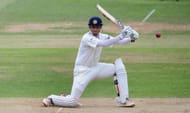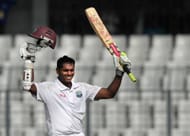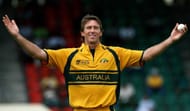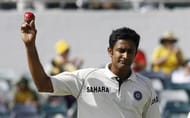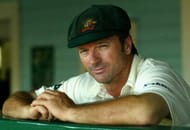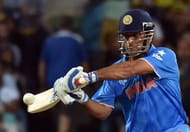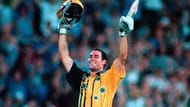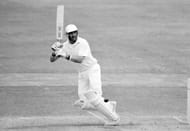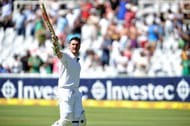It is hard not to romanticise a game like cricket. There is so much involved at so many different levels, you cannot quite put your finger on just one aspect that you could do with or without. Some players were gifted with a lot of talent and very little temperament. Some were not naturally gifted. They didn’t come with a silken touch or natural swing.
Yet, would you really call them not gifted because some of them went on to become legends ahead of all the gifted ones, on the sheer power of their will and temperament, patience, forbearance and a zillion other qualities that we don’t quite categorise under “gifted” when we speak about great players.
One needs to only look at Vinod Kambli and Rahul Dravid and you realise that there is only so far natural gifts can take you. This article is an ode to all those wonderful players who started well behind the so-called “gifted players”, but competed hard and strived for excellence with so much obsession that they finished way ahead of a lot of their gifted contemporaries.
1. Allan Border
Every year, the best Australian player gets the Allan Border Medal, named after a man who took up captaincy with his team in trouble and turned them into world champions and Ashes-winning machines.
More importantly, without the silken cover drive or the elegant flick through midwicket, Border went on to score 11,174 runs, which was the most at his time of retirement, at an average of 50.56 having played the most Tests at the time and the most consecutive Tests. Border had a woodcutter’s focus and a mason’s perseverance and he applied them with great effect to a game which was supposed to favour the gifted.
2. Rahul Dravid
Rahul Dravid was not gifted with the precocious talent that makes players like Sachin Tendulkar, VVS Laxman and Virat Kohli get noticed at an early stage. However, Dravid proved by the end of his career that excessive talent is just a distraction to the talents that one can hone based on their game.
With the most minutes at the crease, Dravid became a player you would bet your life on if it was on the line. Many swear by his cover drive and lovely on-drive, but what made the man who boasts of more erudite fans than fanatics stand out was the fact that he could put those strokes on the back-burner and grind the opposition down when it mattered most. Therein lies his greatness.
A colossal 13288 runs and 31258 balls faced are ample proof that he was the man when the chips were down. Like Matthew Hayden said, Dravid was the epitome of aggression but in the most gentlemanly way possible. In many ways, therefore, he was not inherently gifted like many of his colleagues, but his head ensured he honed the right weapons.
3. Shivnarine Chanderpaul
Shivnarine Chanderpaul didn’t get the farewell he so deserved. But then, life could be harsh if your stance is one of the ugliest ever in cricket.
Chanderpaul always played second fiddle to the dazzling brilliance of Brian Lara but still almost overtook him in career runs. Almost. That has been the story of arguably West Indies’ most responsible and least attractive batsman who racked up 11867 runs, a lot of which came in losing causes or in tough, critical situations with collapses at the other end.
There is the small matter of 49 not outs to go with the tally too. Not surprisingly then, West Indies are already missing him.
4. Glenn McGrath
The lanky Australian didn’t have express pace. He was medium pace at the best of times, operating between 130-135 kmph. He didn’t have the big curving outswinger that someone like Allan Donald had. He couldn’t crank it up on demand like how Curtly Ambrose could.
Despite all his drawbacks, though, McGrath was still the most outstanding seam bowler of his era and that was because of his unrelenting accuracy. If you placed the nib of a fountain pen on the cricket pitch, McGrath, I’m pretty sure, would have hit it six out of six balls. He was a machine.
The most successful fast bowler in cricket’s history with 563 wickets, McGrath operated within his constraints, hardly giving anything away and rarely losing his patience. He might say, “That, my kids, is how I achieved excellence!”
5. Anil Kumble
Rather surprisingly, it was as a fast bowler that Anil Kumble started playing cricket. Thank god, he didn’t become one!
However, the man who turned into a leg spinner at a relatively late age retained a fast bowler’s temperament. Unlike Shane Warne, he didn’t have the skill to turn the ball a mile. Yet, he finished his Test career as the third highest wicket-taker ever with a colossal 619 wickets.
Like McGrath, he relied almost entirely on discipline and had the courage to overcome all odds to come out on top. Who could forget Kumble getting Brian Lara out with a bandaged jaw?
On turning tracks, he was almost unplayable, with his bounce, accuracy and slight turn being more than enough to trouble even the greatest of batsmen.
6. Steve Waugh
Arguably Australia’s greatest Test captain, Steve Waugh can be proud of having turned a very good team into an almost invincible one during the early 2000s.
As far as his batting was concerned, he didn’t have his brother Mark Waugh’s velvet touch. He was not surgical. He was the handyman to his brother’s violin playing artistry.
However, Steve finished his Test career with 10927 runs at an average of 51 and showed himself to be a superior player to Mark, typifying the value of grit and courage over natural talent in the same family. His 46 not-outs show how much he loved a fight. Waugh didn’t score easy runs on belters. He scored hard runs in tough conditions, almost moulded by his mentor, Allan Border, almost turning out like him. He had a ferocious square cut but making a career out of it needed a lot of confidence and temperament, blended with calm and a tactical mind. Waugh had them!
7. MS Dhoni
One of the world’s highest paid sportsmen, the only cricketer in the top 100 and the darling of a country of billion people, MS Dhoni’s origin itself reeked of the lack of gifts.
Hailing from Jharkhand, he was never meant to enter anywhere close to the Test arena, leave alone winning every trophy that is there to be won in cricket, probably the one skipper in the world to do so.
Boasting of a mercurial average of 52.5 in ODIs thanks to 66 not outs, Dhoni became the game’s greatest finisher with a strike-rate close to 90, a few notches over that of Michael Bevan, a legend in his own right. With strong forearms, excellent sense of running between the wickets and good hand-eye coordination, Dhoni made batting a dogfight more than artistry but got the job done with a calm rarely seen at the crease.
8. Michael Bevan
Michael Bevan was probably ODI cricket’s greatest finisher until Dhoni arrived on the scene. While Dhoni won games with his big-hitting at the right moments, Bevan relied on finding gaps, soaking the pressure, farming the strike and playing around the tail.
He pulled off improbable victories including quite a few at the 2003 World Cup. The game was seldom over as long as Bevan was at the crease and even though there wasn’t much to write about his batting quality which primarily comprised of on side whips and manoeuvres, Bevan was all about cold, efficient, calculative execution with a calm head. No wonder that his ODI average was a stupendous 53.58 with 67 not outs.
9. Graham Gooch
Much like the boy wonder Alastair Cook whom he mentored at a much later stage, Graham Gooch was about discipline, patience and piling on the runs. While Cook, noticed very early for his run-scoring capacity rather than the elegance of his batting, recently overtook him to become the first English batsman to 9000 runs, Gooch deserves praise for staying on top of the run-scoring ladder for a very long time.
With 8900 runs in Test cricket, most of which came in difficult situations, Gooch did what was needed to get the job done, a reason why he is so highly respected in spite of his esoteric nature.
His employment of the sweep shot to tackle the Indian spinners in the 1987 World Cup semi-final, when Gooch produced a masterful century to overcome the Indians on home soil, is a classic example of how he found a way to survive and score runs, and big runs at that.
Stockily built and armed with a big bat, Gooch was an antithesis to David Gower, more Hercules with a club to smash whatever was in his zone. Had he not lost some good years to rebellion, he was sure to reach 10000 Test runs, something his protégé will surely do in the next couple of years at most.
10. Graeme Smith
Graeme Smith’s relatively early retirement showed he was not a man interested in numbers, having finished on 9265 runs, the second most for a South African batsman. No prizes for guessing who is No.1!
Smith looked ungainly, ugly at times. He had the whip off the pads even to balls that pitched outside off-stump. He had the off-drive without any elaborate feet movement. But beyond that, there was nothing eye-catching about Smith’s batting.
Yet, he racked up tough double hundreds in England and was known for runs in the fourth innings when batting was at its toughest. Smith was all steel and it was under him that South Africa found its full potential, home and away, becoming along with India the only team to challenge Australia in Australia during their peak. They even went a step ahead by winning a Test series Down Under in 2008/09 and as expected, Smith’s contribution with the bat proved to be as crucial as his astute captaincy skills.
Brand-new app in a brand-new avatar! Download CricRocket for fast cricket scores, rocket flicks, super notifications and much more! 🚀☄️
